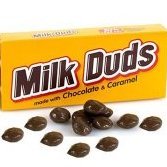Attention Maizefarmer
-
Recently Browsing 0 members
- No registered users viewing this page.
-
Topics
-
-
Popular Contributors
-
-
Latest posts...
-
138
Epstein Coverup Continues
That is simply not true. If Trump was implicate in anything to do with Epstein, we'd have see every detail by now. You seem to be oblivious to the witch hunt aimed at Trump since 2016. The whole 'there is no list' i am not buying at all. There has to be records of desription. -
205
What sort of personality traits do you need to marry a bargirl?
I was always good at earning money, but didn't have much spare time. So easier and more cost effective to pay. Imagine spending days trying to romance a lady into bed, that would have lost me thousands of pounds in earning, and not guaranteed the result I wanted. Obviously it would depend on your sex drive, knew one guy that was perfectly happy with once a month, but I'd go made with less than 3x a week. -
7
Report Drunken Brawl Leaves Chaos and Bruised Police in Pattaya
I used to be a high school teacher With boys you'd let them punch a bit to figure who was top dog & they would appreciate being broken apart Stepping in when two girls were fighting was a whole different kettle of fish. They'd go nuts, tearing each others hair out, clothes etc... Had to take a much more cautious approach with them -
57
Miserable Expats Who Can’t Stop Complaining About Thailand but Never Leave
People behave differently behind a mask than they do out on the streets. This forum is chalked full of liars, especially from the young men. -
1
Buddhist holy days Bar closures / Khon kaen
Thursday is Asahala Bucha Day and Friday is first day of Buddhist Lent. Both "big" Buddha days and have alcohol sales bans. Saturday should be back to normal -
2
Tourism Thailand Boosts Global Wellness Tourism with Nationwide Centres
Well, I'm 76 and quite well thank you, and I've never been near a 'wellness centre'. Indeed, I had no idea such things exist.
-
-
Popular in The Pub





.thumb.jpeg.d2d19a66404642fd9ff62d6262fd153e.jpeg)






Recommended Posts
Create an account or sign in to comment
You need to be a member in order to leave a comment
Create an account
Sign up for a new account in our community. It's easy!
Register a new accountSign in
Already have an account? Sign in here.
Sign In Now